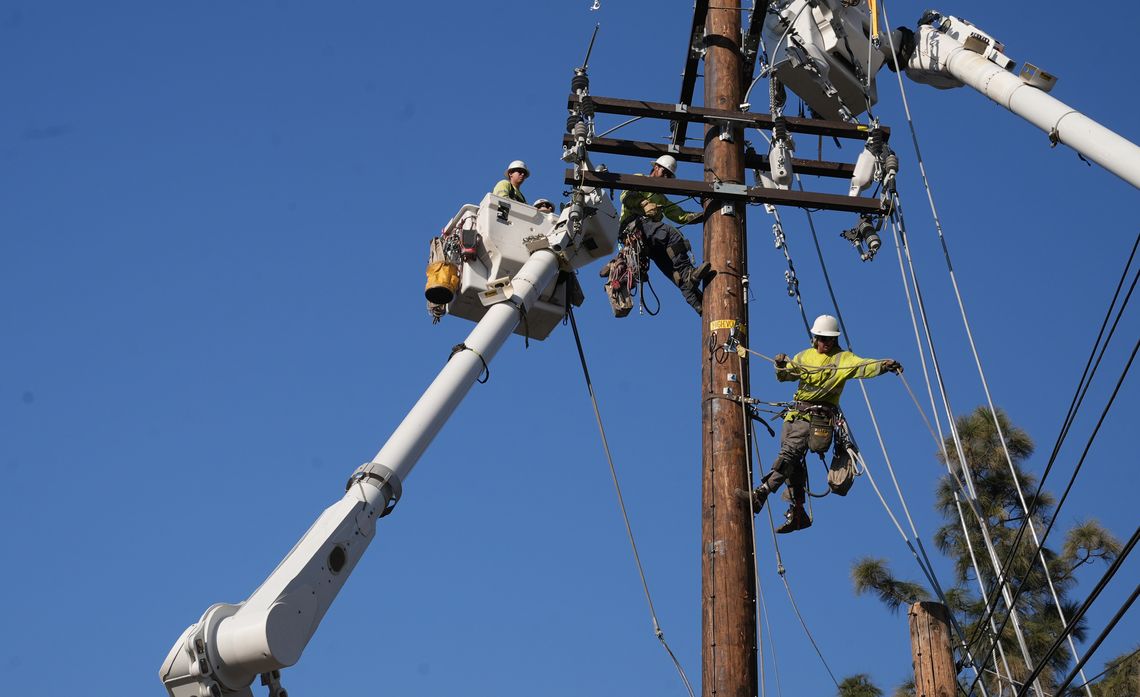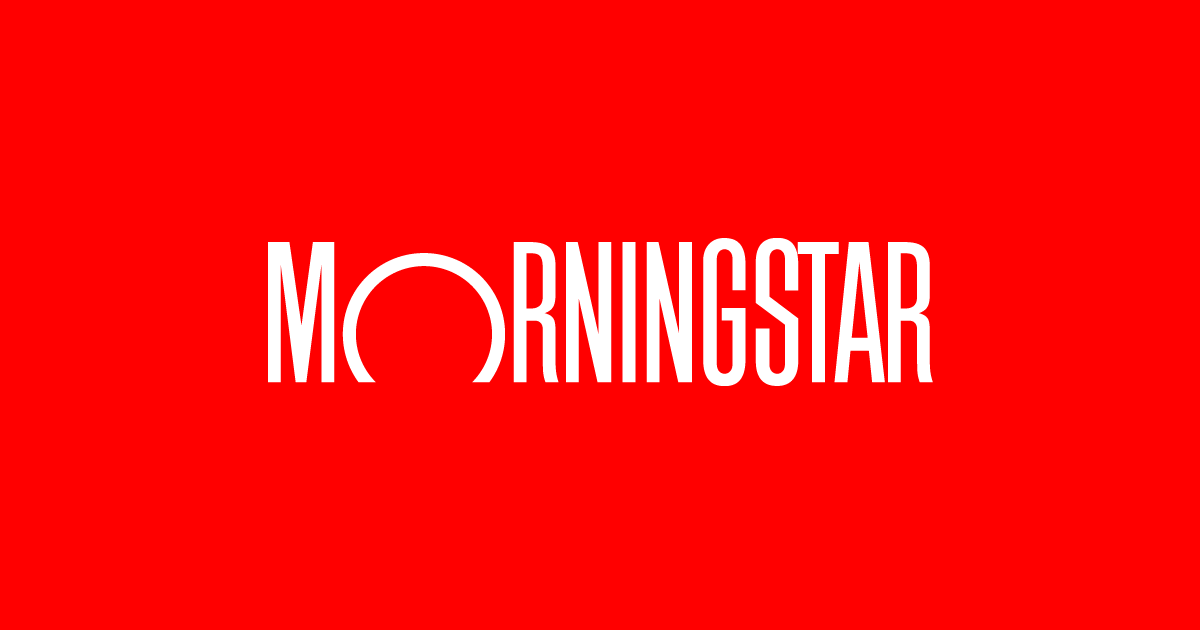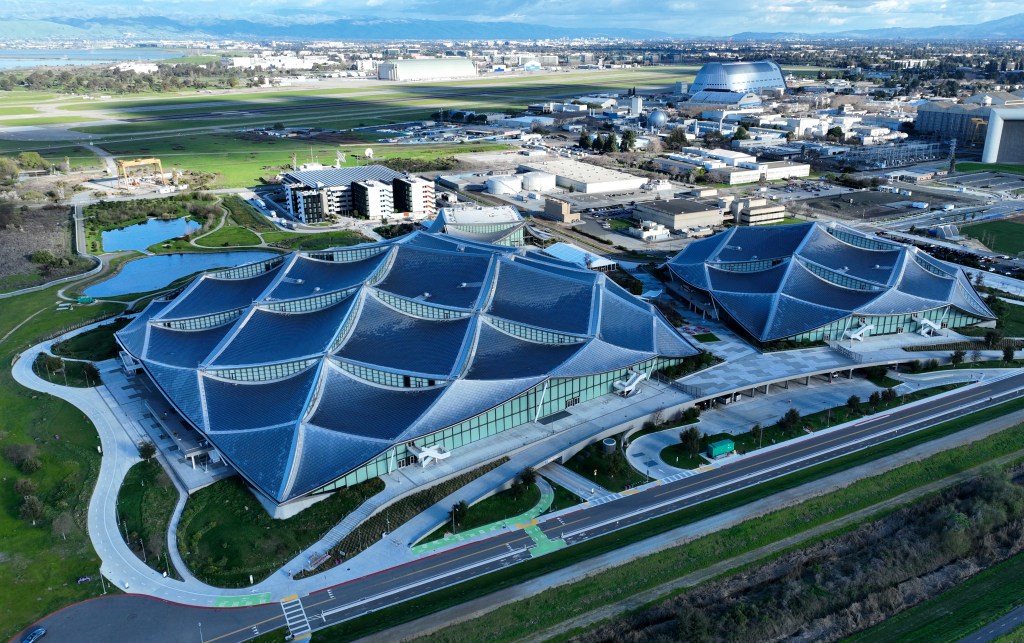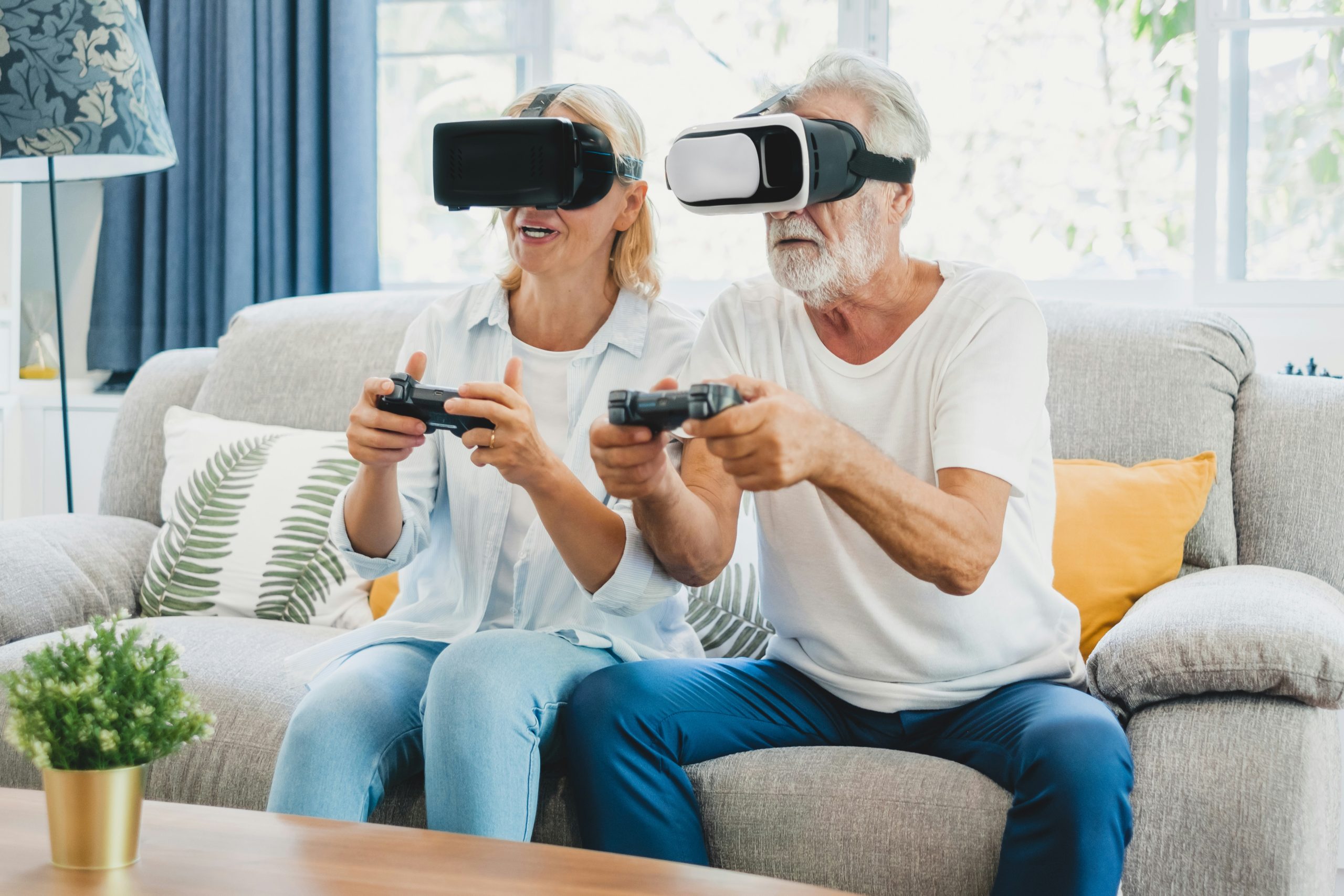Technology
Using Advanced Technology for Wildfire Safety
As extreme weather becomes more frequent, the need for greater wildfire mitigation is more important than ever. The heartbreaking wildfires and windstorms in January only emphasize that fact. “The January wildfires underscore the importance of mitigation plans and the need for continuous and evolving tools to maintain infrastructure resiliency,” said Steven Powell, president and CEO […]

As extreme weather becomes more frequent, the need for greater wildfire mitigation is more important than ever. The heartbreaking wildfires and windstorms in January only emphasize that fact.
“The January wildfires underscore the importance of mitigation plans and the need for continuous and evolving tools to maintain infrastructure resiliency,” said Steven Powell, president and CEO of Southern California Edison. “While you can’t eliminate wildfire risk, we continue to invest in new and innovative solutions to bring us as close to zero as possible.”
To protect communities, SCE is integrating advanced technologies that increase its wildfire prevention abilities and outlined these tools in its updated Wildfire Mitigation Plan. In the updated plan, current programs are being expanded and several new pilot programs will launch to help enhance wildfire safety.
Technology
HELIOS Partners with NHL Rising Star Matthew Knies to Revolutionize Youth Sports Training
HELIOS Partners with NHL Rising Star Matthew Knies to Revolutionize Youth Sports Training HELIOS, a leader in sports technology innovation, proudly announces a groundbreaking partnership with Toronto Maple Leafs forward Matthew Knies. This collaboration aims to redefine youth sports training, starting with ice hockey player development, by delivering performance data, personalized insights, and automated shift […]

HELIOS Partners with NHL Rising Star Matthew Knies to Revolutionize Youth Sports Training
HELIOS, a leader in sports technology innovation, proudly announces a groundbreaking partnership with Toronto Maple Leafs forward Matthew Knies. This collaboration aims to redefine youth sports training, starting with ice hockey player development, by delivering performance data, personalized insights, and automated shift video to players and coaches.
This press release features multimedia. View the full release here: https://www.businesswire.com/news/home/20250604253145/en/
As the youth sports industry evolves, with projections estimating a market size of $70 billion by 2030, the demand for individualized training solutions has never been higher. HELIOS stands at the forefront of this transformation, offering cutting-edge technologies that empower young athletes to reach their full potential.
Matthew Knies, known for his relentless work ethic and explosive approach to the game, embodies the synergy between athletic excellence and sports science. His partnership with HELIOS underscores a shared commitment to fostering the next generation of athletes through innovative training methodologies.
“When I was younger there wasn’t any way to track what I was doing. I always dreamed of having something like this,” Knies said. “Now, HELIOS has completely changed the landscape for developing youth hockey players. I’m excited to work with HELIOS and drive the game forward.”
HELIOS’ platform leverages cutting edge AI-wearable technology to provide objective insights on skating performance, enabling athletes and coaches to optimize training and development . This approach not only enhances performance but also prioritizes injury prevention and individualized athlete development.
“Matthew’s development pathway aligns perfectly with our mission,” stated Bill Near, CEO of HELIOS. “Together, we’re setting a new standard for how young athletes train and grow in their respective sports.”
About HELIOS
HELIOS is the leading wearable technology and data platform for ice hockey, providing coaches, players, and parents with unmatched insight into on-ice performance. Trusted across programs at all levels, from elite youth to professional, HELIOS is redefining how development is measured and achieved.
About Matthew Knies
Matthew Knies is a forward for the Toronto Maple Leafs and one of the NHL’s most promising young players. A standout in the USHL and at the University of Minnesota, he earned All-American honors and helped Team USA win gold at the IIHF World Junior Championship. Off the ice, Knies is dedicated to helping young athletes train smarter and reach their potential.
Media:
HELIOS
Michael Lombardi, Marketing Director
609-923-3223
michael@heliossports.ai
View source version on businesswire.com: https://www.businesswire.com/news/home/20250604253145/en/
Technology
AI-powered sports analytics company picks Indiana for expansion
ai.io said it has worked with more than 50 professional club collegiate and federation level programs. INDIANAPOLIS — ai.io, an AI-powered sports analytics company, announced it is choosing Indiana for its operational and R&D functions. The London-based leader in AI-driven athlete discovery and recruiting boasts bringing pro-level evaluations to any athlete with a smartphone. In […]

ai.io said it has worked with more than 50 professional club collegiate and federation level programs.
INDIANAPOLIS — ai.io, an AI-powered sports analytics company, announced it is choosing Indiana for its operational and R&D functions.
The London-based leader in AI-driven athlete discovery and recruiting boasts bringing pro-level evaluations to any athlete with a smartphone.
In partnership with Intel, ai.io said it recently helped build Senegal’s Olympic team using its AI-powered app.
ai.io said it has worked with more than 50 professional club collegiate and federation level programs across North America, Europe, Africa and Asia.
“Expanding into Indiana gives us an edge — it’s where innovation meets sports infrastructure and the entire sports tech ecosystem across Indiana has really impressed us,” said Richard Felton-Thomas, COO at ai.io. “This move allows us to tap directly into critical sports environments and pioneering university research, accelerating the impact of our AI solutions on athletes and teams across North America.”
It is not yet clear how many jobs the move will create.
Technology
Bay Area tech workers endure grim 2025 as big companies reveal layoffs
The Bay Area has lost more than 11,000 tech jobs so far in 2025, a slump in hiring punctuated by disclosures of fresh layoffs in the region by some big players such as Google, Walmart and Microsoft. The protracted hiring slump is a reminder that the tech industry is no longer a robust engine that […]

The Bay Area has lost more than 11,000 tech jobs so far in 2025, a slump in hiring punctuated by disclosures of fresh layoffs in the region by some big players such as Google, Walmart and Microsoft.
The protracted hiring slump is a reminder that the tech industry is no longer a robust engine that helps to power the Bay Area economy.
The tech sector, instead, has begun to weigh down hiring in the Bay Area job market.
In the most recent rounds of layoffs, Walmart, Google and Microsoft have disclosed their intentions to eliminate a combined 168 jobs, according to WARN letters the companies sent to the state Employment Development Department.
Here are some of the details of newly filed WARN notices that point to upcoming job cuts for some tech companies in the Bay Area:
— Walmart, 108 job cuts affecting tech workers at a San Bruno site where the retailing titan crafts e-commerce and online services. The layoffs are scheduled for Aug. 22.
— Google, 53 layoffs in Sunnyvale. The search giant scheduled the downsizing for July 6.
— Microsoft, eight staffing reductions in Mountain View and Sunnyvale. The software titan’s cutbacks are slated to occur Aug. 1.
— Cruise, one job cut in San Francisco. The former autonomous vehicle company said the job cut occurred May 30.
All of the job cuts were described as permanent by the various companies.
The weakness in the Bay Area tech industry so far in 2025 is widespread, according to seasonally adjusted estimates that Beacon Economics derived from the monthly reports released by the state EDD.
Of the 11,200 net loss in tech jobs for the Bay Area, the worst losses occurred in the San Francisco-San Mateo region.
The nosedive in tech employment has materialized in the San Francisco metro area despite some optimistic assessments that the fledgling artificial intelligence industry was providing a jobs lift to San Francisco.
Here is how tech job trends looked in the Bay Area’s three largest urban centers over the first four months of 2025, according to this news organization’s compilation of the Beacon Economics industry estimates:
— San Francisco-San Mateo suffered a net loss of 5,400 tech jobs.
— The South Bay lost 3,400 tech jobs.
— The East Bay shed a net total of 2,100 tech jobs.
In the North Bay, Sonoma County lost 200 tech jobs, and Marin County lost 100 tech positions. Tech job totals were unchanged in Solano County and Napa County over the first four months of this year.
Technology
Sony and National Hockey League Announce Multiyear Global Technology Partnership
The NHL and Sony will work together to evolve the NHL experience for fans, as well as NHL coaches, officials, players and broadcasters, by increasing Sony’s Beyond Sports’ production of NHL animated data visualizations, broadening usage of Sony’s Hawk-Eye measuring and tracking technologies and investing in various Sony products and technologies that will bring NHL […]

The NHL and Sony will work together to evolve the NHL experience for fans, as well as NHL coaches, officials, players and broadcasters, by increasing Sony’s Beyond Sports’ production of NHL animated data visualizations, broadening usage of Sony’s Hawk-Eye measuring and tracking technologies and investing in various Sony products and technologies that will bring NHL fans closer to the game than ever before.
“Partnering with Sony, a best-in-class industry leader, will help further the goals of our technology efforts to engage passionate NHL fans around the globe,” said David Lehanski, NHL Executive Vice President, Business Development & Innovation. “Advancing the development and implementation of technology on and off the ice is a key priority for the League, and this partnership will highlight the impact of Sony’s groundbreaking work in several of our key initiatives, such as NHL EDGE Puck & Player Tracking and animated programming, to bring fans closer to our great game and showcase the NHL as a worldwide technology leader.”
“Our partnership with the NHL is more than a collaboration — it’s a shared commitment to innovation, creativity, and cutting-edge technology,” commented Sander J. Schouten, Managing Director, Beyond Sports, a Sony Group company. “We’ve pushed the boundaries of what’s possible in sport tech, delivering exciting, data-driven innovations that are not only redefining how sport is consumed but together, with Sony’s sports businesses, are establishing new benchmarks for the entire industry.”
“From imaging and broadcast to some of the world’s most advanced data visualization and tracking innovations, Sony remains committed to helping create the future of sports through technology,” says Theresa Alesso, President, Imaging Products and Solutions Americas, Sony Electronics. “This partnership builds upon a successful history of collaborations between the NHL and Sony, and we are excited to reinforce our commitment to the game, fans, and players.”
The NHL has used Sony’s Hawk-Eye technology since 2015 with Synchronized Multi-Angle Replay Technology (SMART) services installed in all 32 NHL arenas to help provide the speed and accuracy the NHL requires for its replay reviews and coaches’ challenges; with later enhancements supporting team medical, and player health and safety reviews. Data collected via optical tracking cameras is also integral to the creation of live NHL animated data visualizations, post-production content and replay technology, and will be featured in future experiences in development involving mobile apps and XR. Sony’s Hawk-Eye will continue to expand technology innovation and support the creation and delivery of more immersive NHL content.
The NHL and Sony’s Beyond Sports first collaborated in 2018 on multiple projects to explore opportunities built on NHL EDGE (Puck & Player Tracking) positional data. Sony’s Beyond Sports’ animated data visualization expertise has played a key role for the NHL in transforming its data into a powerful fan engagement driver, delivering new IP-driven content — from the NHL Big City Greens Classic, a Sports Emmy-nominated animated broadcast presentation and Tommy Hawk’s Birthday Party, the first-ever regional animated real-time sports animated broadcast presentation, to more serialized animated programming, such as NHL HOCKEYVERSE Matchup of the Week. Sony’s Beyond Sports’ work also led to immersive digital activations, such as NHL Blast on Roblox, which drew over one million unique users in its first month in April 2023. These initiatives have expanded the League’s reach among younger audiences and set new standards for sports data integration.
Sony cameras and production equipment have been a prominent fixture in the NHL through broadcast and sports photography and are regularly trusted by NHL Clubs and broadcast partners to capture the most defining moments of the game. NHL Clubs rely on Sony technology to process and deliver the best camera angles in real-time to millions of NHL fans.
NHL and the NHL Shield are registered trademarks of the National Hockey League. NHL and NHL team marks are the property of the NHL and its teams. © 2025 NHL. All Rights Reserved.
About Sony Electronics Inc.
Sony Electronics is a subsidiary of Sony Corporation of America and an affiliate of Sony Group Corporation, one of the most comprehensive entertainment companies in the world, with a portfolio that encompasses electronics, music, motion pictures, mobile, gaming, robotics and financial services. Headquartered in San Diego, California, Sony Electronics is a leader in electronics for the consumer and professional markets. Operations include research and development, engineering, sales, marketing, distribution and customer service. Sony Electronics creates products that innovate and inspire generations, such as the award-winning Alpha Interchangeable Lens Cameras and revolutionary high-resolution audio products. Sony is also a leading manufacturer of end-to-end solutions from 4K professional broadcast and A/V equipment to industry leading 4K and 8K Ultra HD TVs. Visit https://www.sony.com/news for more information.
Sony’s Beyond Sports is an AI based company specializing in data processing, distribution and visualization that offers a new way of experiencing sports to engage the next generation of fans. Our Emmy Award winning visualization platform enables real-time digital and virtual sports engagement solutions for leagues, broadcasters, brands and, ultimately, consumers.
Sony’s Hawk-Eye Innovations has been at the forefront of sports officiating and broadcast enhancement technology since 2001. Hawk-Eye’s vision-processing, video replay and creative graphic technologies are trusted by the world’s biggest sporting events to make sport more fair, safer, more engaging and better informed.
About the NHL
The National Hockey League (NHL), founded in 1917, consists of 32 Member Clubs. Each team roster reflects the League’s international makeup with players from more than 20 countries represented, all vying for the most cherished and historic trophy in professional sports – the Stanley Cup. Every year, the NHL entertains more than 670 million fans in-arena and through its partners on national television and radio; more than 191 million followers – league, team and player accounts combined – across Facebook, Twitter, Instagram, Snapchat, TikTok, and YouTube; and more than 100 million fans online at NHL.com. The League broadcasts games in more than 260 countries and territories through its rightsholders including ESPN, WBD Sports and NHL Network in the U.S.; Prime Video, Sportsnet and TVA Sports in Canada; and via SiriusXM NHL Network Radio™, Sports USA and TuneIn; and reaches fans worldwide with games available to stream in every country.
Fans are engaged across the League’s digital assets on mobile devices via the free NHL App; across nine social media platforms; on SiriusXM NHL Network Radio™; and on NHL.com, available in eight languages and featuring unprecedented access to player and team statistics as well as every regular-season and playoff game box score dating back to the League’s inception, powered by SAP. NHL Productions develops compelling original programming featuring unprecedented access to players, coaches and League and team personnel for distribution across the NHL’s social and digital platforms.
The NHL is committed to building healthy and vibrant communities using hockey to celebrate fans of every race, color, religion, national origin, gender identity, age, sexual orientation, and socio-economic status. The NHL’s social impact platform, NHL Unites, reinforces that the official policy of the sport is one of inclusion on the ice, in locker rooms, boardrooms and stands. Through the NHL’s investments in communities across North America, the League is expanding access and opportunity for people of all backgrounds and abilities to play hockey. Last season, a record number of girls and boys stepped onto the ice and tried hockey for the first time. The NHL’s premiere ball hockey program, NHL STREET, continues its expansion into NHL and non-NHL markets, offering fun and affordable hockey for youth. And in arenas Leaguewide, more than 350 cultural celebrations nights are held, celebrating fans of all backgrounds. The League’s efforts continue to foster more inclusive environments and grow the game through a greater diversity of participants.
SOURCE Sony Electronics, Inc.

Technology
How Technology is Changing the Way People Play
The way people engage in play, whether through games, sports, or casual activities, has shifted dramatically over the past few decades. Technology’s growing influence has transformed traditional forms of play into dynamic, interactive experiences. From the rise of digital gaming platforms to wearable devices enhancing physical sports, technology has integrated itself deeply into leisure and […]

The way people engage in play, whether through games, sports, or casual activities, has shifted dramatically over the past few decades. Technology’s growing influence has transformed traditional forms of play into dynamic, interactive experiences. From the rise of digital gaming platforms to wearable devices enhancing physical sports, technology has integrated itself deeply into leisure and entertainment.
One of the most noticeable changes comes from the expansion of video games and online gaming communities. Where playing once meant gathering around a physical board game or meeting friends at a local sports field, players now connect virtually from across the globe. The accessibility of smartphones and powerful consoles means that games are available anytime, anywhere, breaking down previous barriers like location and time. Social media integration and multiplayer features allow players to build communities, compete, or collaborate in real time.
The development of mobile gaming has further accelerated this transformation. People now carry entire gaming libraries in their pockets, and these games continue to push boundaries with high-quality graphics, complex narratives, and engaging gameplay. One popular example within this sphere is the rise of platforms like mega888, which combines accessibility with immersive gaming experiences. These platforms cater to a wide audience and offer opportunities for both casual players and those seeking competitive challenges.
Impact of Virtual Reality and Augmented Reality
Virtual Reality (VR) and Augmented Reality (AR) have introduced new dimensions to play, offering immersive experiences that were unimaginable before. VR transports users into fully simulated worlds, allowing them to interact with digital environments in a three-dimensional space. This technology has been embraced by both gamers and fitness enthusiasts, merging exercise and entertainment in novel ways.
Augmented Reality overlays digital information on the real world, enhancing physical play and everyday environments. Games like Pokémon GO became global phenomena by encouraging players to explore their surroundings while engaging with digital creatures. AR is also being used in educational play, blending learning with interactive elements to maintain engagement and improve retention.
Both VR and AR are expanding the definition of play, enabling new social experiences and physical activities that blend reality with virtual elements. This crossover has encouraged innovation in game design and created opportunities for fitness, education, and creative expression.
Wearable Technology and Smart Devices
Wearables and smart devices have become key players in how people interact with games and physical activities. Fitness trackers, smartwatches, and heart rate monitors allow users to track their physical performance during sports or workouts. These devices provide real-time feedback, motivating users to improve and compete against themselves or others.
In gaming, wearable technology has been integrated into controllers and accessories, adding physical movement and sensory feedback. Devices that track motion, like VR controllers or dance mats, make play more active and immersive. This encourages players to move beyond the sedentary stereotype of gaming and enjoy more physical engagement.
Smart devices also connect with apps that personalize gaming and workout experiences. Whether it’s adjusting difficulty levels, tracking progress, or connecting with a community, technology creates a more tailored approach to play. This personalization helps maintain long-term interest and fosters a sense of achievement.
The Role of Streaming and E-Sports
The growth of streaming platforms has dramatically altered how people watch and participate in play. Services like Twitch and YouTube Gaming have turned game streaming into a spectator sport, where players broadcast their gameplay to millions of viewers. This has opened new career paths for professional gamers and content creators, creating a vibrant ecosystem around interactive entertainment.
E-sports, or competitive gaming, have gained legitimacy as a global phenomenon. Tournaments with massive prize pools attract millions of fans, and the level of skill and strategy involved rivals traditional sports. This professionalization has increased interest in gaming as both a pastime and a career.
Streaming platforms also encourage social interaction by enabling real-time communication between players and their audiences. This connectivity fosters a sense of community, enhancing the social aspect of gaming and play.
Impact on Traditional Sports and Recreation
Technology’s influence isn’t limited to digital gaming; it has also reshaped traditional sports and outdoor recreation. Innovations such as advanced analytics, wearable sensors, and video replay have improved training methods and fairness in competition.
Athletes use data collected from technology to fine-tune their techniques and strategies. Coaches analyze performance metrics to identify strengths and weaknesses. Fans benefit from enhanced viewing experiences through instant replays, multiple camera angles, and real-time statistics.
Even casual players enjoy technology-enhanced sports through apps that organize games, track scores, or provide tutorials. Virtual coaching and fitness programs allow individuals to practice skills and stay active without needing direct access to clubs or gyms.
The Social Impact of Technological Play
As technology changes how people play, it also influences social dynamics. Online multiplayer games and virtual worlds allow players to connect regardless of geographic or cultural boundaries. These spaces create new friendships and communities built around shared interests and teamwork.
However, the shift toward digital play can sometimes lead to concerns about reduced physical interaction and potential overuse. Balancing screen time with real-world activity remains a challenge for many, especially younger players.
Parents, educators, and community leaders are finding ways to harness technology positively by encouraging healthy gaming habits and blending digital play with outdoor activities and face-to-face socialization.
The Future of Play with Technology
Looking ahead, the integration of artificial intelligence, cloud gaming, and 5G connectivity promises to deepen technology’s role in play. AI-driven game design will provide more adaptive and personalized experiences. Cloud gaming allows instant access to games without powerful hardware, broadening the reach.
Faster internet speeds will improve multiplayer experiences and enable new forms of interactive entertainment that blend physical and digital worlds seamlessly. As these technologies develop, they will continue to reshape how people experience play, blending creativity, competition, and social interaction in new ways.
Technology
NHL, Sony Execs Dive Deeper into New Technology Partnership for Beyond Sports, Hawk-Eye, and More
NHL’s Dave Lehanski, Sony’s Theresa Alesso, and Beyond Sports’ Sander Schouten on what the deal means for the future of the NHL fan experience Earlier today, Sony and the NHL announced a new multiyear global technology partnership that will see the league expand its use of Sony’s Beyond Sports’ technology for NHL animated data visualizations […]

NHL’s Dave Lehanski, Sony’s Theresa Alesso, and Beyond Sports’ Sander Schouten on what the deal means for the future of the NHL fan experience
Earlier today, Sony and the NHL announced a new multiyear global technology partnership that will see the league expand its use of Sony’s Beyond Sports’ technology for NHL animated data visualizations and Hawk-Eye measuring and tracking technologies, as well as invest in additinoal Sony products and technologies that will “bring NHL fans closer to the game than ever before.” It marks the latest chapter in the two companies’ ongoing collaboration in recent years.
SVG sat down with David Lehanski, NHL Executive Vice President, Business Development & Innovation; Theresa Alesso, President, Imaging Products and Solutions Americas, Sony Electronics; and Sander Schouten, CEO and Co-Founder, Beyond Sports; to dive deeper into the what the deal means for the future of the fan experience.
Why does this partnership make sense from the league’s perspective?

NHL’s Dave Lehanski: New Sony partnership is “really about where we go next and how we continue to transform.”
Lehanski: This is a true partnership with Sony – from Hawk-Eye to Beyond Sports to Imaging and cameras and even beyond that. This is an exciting overall partnership that has us thinking about the future and where we are going next. So it’s not just a partnership based on a few products that we knew we wanted; it’s a broader canvas that has the entire Sony [portfolio] in mind. Yes, we have a lot of [Sony technology] in place right now and we want to keep using those products and services, but it’s really about where we go next and how we continue to transform.
And from a Beyond Sports perspective?
Schouten: In this [partnership], we are never really satisfied and we are always trying to push each other further. The status quo is not accepted; we need to break that status quo to go further. We are always trying to improve – whether it is us coming to the NHL with new product and them always saying ‘yes, let’s do it’ or it is the NHL coming to us saying ‘that was great, but could you also do this?’ That dynamic is such a pleasure to work in and why we are so excited for the partnership that we now have in front of us.
And what about in terms of Sony as an overall company?
Alesso: We’ve worked with the NHL for a very long time and we’re thrilled that we can finally get to a point to solidify this in a much larger way. I think really the great working relationship we’ve already established together can now be taken to the next level. Obviously, that includes the great work already being done by the teams at Beyond Sports and Hawkeye. But we are also thinking about NHL staff photographers using our Alpha cameras for still imaging, [the role of] Sony studio cameras that bring all of the supporting engagements into the home, we also have center ice coverage, we have an ability to be able to partner with our cloud services team, and even can create a faster game with our transmitters so that data can be shared in a much quicker way.
But the most magical part of all of it is really the breadth of the entire [portfolio], bringing together our home entertainment, our personal audio, our imaging products, our sports technology products together with the NHL. We hope to be able to evolve the NHL experience for broadcasters and fans at home, fans in the stands, coaches, officials, and players alike. So we’re really excited about the breadth of what we can do together.
And how did your existing partnerships – especially using Beyond Sports and Hawk-Eye technology – play into this deal?
Lehanski: We’ve already had a lot of success and, certainly if things weren’t already going really well with Beyond Sports and Hawk-Eye, we wouldn’t be establishing this partnership today. But obviously they have overdelivered in every aspect and we couldn’t be more excited to continue leveraging those technologies and are excited about where we’re going to go using those platforms. It was really a no-brainer.
Sony obviously has a wide-rannging broadcast portfolio – what are some of the key technologies you see the being integrated by the NHL in the near-term?
Lehanski: If you just think about the different components, there are really three key pieces that stick out to me. I’ll start with the ability to leverage their technology to capture our game like never before: cameras, tracking systems, and other infrastructure that we can now look at putting into every building. Then there’s the processing of everything that we capture and that’s where the Big City Green Classic and other [animated data visualizations] that we’ve done with Beyond sports come into it. How do we take all the assets – the data and the video and the audio – and turn it into entirely new experiences. And then there’s distribution: where do we put that content and where do we think creatively about reaching the fan in the future? There are incredible opportunities that we are looking at right now which will go beyond anything that we’ve done to date.
So that’s a high-level overview, but it’s really about the breadth of all the products and services and how they can help us create really transformative change for the NHL.
Can we expect more animated broadcasts next season as a result of this deal?
Lehanski: Yes, there will be more animated data visualization content produced with Beyond Sports and in a greater variety of formats – from full games to condensed games to highlights. You’ll see more of that content distributed across linear, streaming, and other platforms. Right now we’re homing in on conversations about the optimal use of the technology. We think we’re just scratching the surface with short form content highlights and clips and how we leverage that across all platforms, including social media and digital environments and gaming platforms. You’re going to see more of that this year.
Can you offer any concrete examples of how this partnership will manifest itself next season beyond the animated data visualizations?
Lehanski: We’re going to continue to produce that content with a focus on a younger audience because we think there is an inherent connection there, but we’re also going to expand [Beyond Sports technology] into new opportunities.
For example, during the Western Conference Finals on ESPN, PK Suban used the Beyond Sports environment for game analysis. So that’s an example of how the technology can be applied in a completely different way and you’re going to see a lot more of that. We are witnessing the beginning of an evolution for game broadcast not just for the NHL but in other sports as well. If you fast forward, picture that experience, but on a personal level for the fan. A fan could actually go into a game and experience it that way and customize different elements of the experience

Beyond Sports’ Sander Schouten: “The ultimate dream is to give the creation engine to the masses.”
Schouten: Sony believes that we need to give the creativity back to the user and that’s what we envision over these years to come to fruition. We know that the new generations want to participate more; they just don’t want to have a linear lean-back experience. Some [fans] are going to follow certain personalities or certain aspects of the game. Maybe you want to watch a whole match from a goalie perspective or from a top view. So what you’re going to see is a momentum shift from one singular broadcast to many [versions] of the broadcast for this younger generation. And then eventually, as Dave said, the ultimate dream is to give the creation engine to the masses.
Lehanski: Another example is how we’ve worked with Beyond Sports to produce custom environments leveraging IP like Big City Greens. We’ve created really amazing fantastical backdrops for these games and, eventually, we want to give fans an opportunity to customize some what they see and select how they view it in terms of the camera angle and the level of interactivity. That’s further down the road, but we’ll absolutely get to that point.
And what about from a Hawk-Eye standpoint?
Lehanski: We currently have the Hawk-Eye skeletal and stick tracking optical system in all 32 arenas. We’ve used this season mostly to validate the data from arena to arena, but we also used it the animated digital visualization content we produced, including the five live games we did this year. You’re going to see more use of that data next season – both from a data standpoint with regard to new stats, events and analytics that we’ll be able to track from the skeletal and stick tracking, as well as other types of experiences for how we take that data and create virtual experiences where players as avatars are representing what’s happening on the ice.
And how about leveraging the rest of Sony’s technology portfolio? Any specific examples of how we’ll see that play out?

Sony’s Theresa Alesso: “We’re really excited about the breadth of what we can do together.”
Lehanski: One other thing that we’re working on with Sony for next season and beyond, is finding new ways to bring a more authentic version of the live experience to fans at home. Everyone knows the experience of live hockey in the arena is amazing, but we want to be able to distribute that out and create an equally compelling experience for fans’ screens and devices – wherever they may be. We used to look at the arena as a challenge to deal with from a broadcast standpoint because of the ice and boards and glass. But now we see an opportunity to use technology to capture the game in a really unique way. So we’re thinking about the arena infrastructure of the future – cameras, microphones, lighting and everything else – and how we can create not only the optimal theater setting for a live event, but a studio setting where we can capture that live event in myriad ways and be able to create new experiences.
Alesso: One example that immediately comes to mind is that our HDC-P50 studio camera is now the center ice camera for [NHL broadcasts]. We want to give fans that are sitting at home the same feel and quality of experience that they would have at the arena. We also are looking to become more efficient. For example, the Sony [PDT-FP1 portable data] transmitter allows content to be shifted back and forth, so if you’re shooting on an Alpha camera, you can move that content in a much more efficient and effective manner. We’ve been in the broadcast arena for over 40 years and I’ve been here for 35 of them – and we’ve dreamed for the day that we can take the great technology that we have and team up with a league like the NHL to really bring it to life.
This interview has been edited for length and clarity.
-

 College Sports2 weeks ago
College Sports2 weeks agoPortal Update – Basketball and Gymnastics Take Hits
-

 College Sports2 weeks ago
College Sports2 weeks agoPortal Update – Basketball and Gymnastics Take Hits
-

 Professional Sports2 weeks ago
Professional Sports2 weeks agoJon Jones answers UFC retirement speculation as fans accuse champion of 'holding the belt …
-

 NIL1 week ago
NIL1 week ago2025 NCAA Softball Tournament Bracket: Women’s College World Series bracket, schedule set
-

 Health2 weeks ago
Health2 weeks agoBYU women's basketball guard injures ACL twice
-

 Youtube2 weeks ago
Youtube2 weeks agoXavier Legette taught Marty Smith his signature celly
-

 Motorsports2 weeks ago
Motorsports2 weeks agoWhy IHOP Rode With Dale Earnhardt Jr. In Amazon NASCAR Debut
-

 College Sports2 weeks ago
College Sports2 weeks agoNCDC Commitment Profiles: Cyclones’ Martins Moving On to Saint Anselm College • USPHL
-

 High School Sports2 weeks ago
High School Sports2 weeks agoToday in the MHSAA
-

 Health3 weeks ago
Health3 weeks agoNew training facility opens in Reading for athletes' mental and physical advancement



































